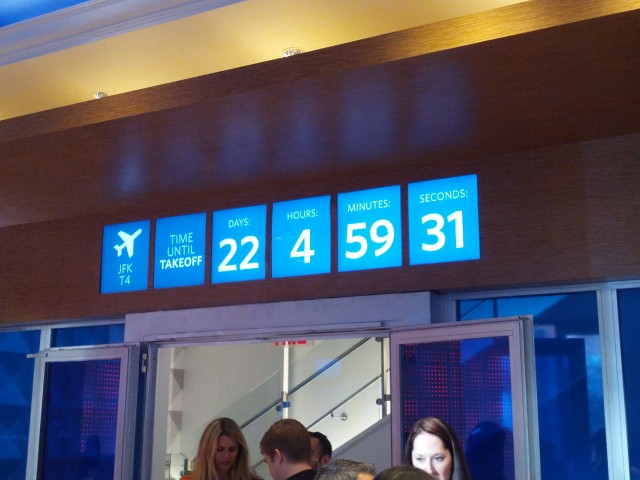
Only 22 days, 4 hours, 59 minutes, 31 seconds until JFK T4 opens…. but who’s counting.
How does an airline spread the word about their new terminal opening soon? If you guessed “rent space in lower Manhattan, recreate the best features of the new terminal, and sell cheap lunches,” you are correct! If that isn’t what you guessed, let me tell you a little bit about how Delta is preparing New York for the new JFK Terminal 4.
On May 24th, Delta opens an expansion to terminal 4 at JFK, moving their operations out of terminal 3. For those of you who many not have flown Delta through JFK recently, terminal 3 has fallen on hard times, and is slated for total demolition in the near future. The experience there is anything but world class, and passengers actively avoid it. Terminal 4, on the other hand, is a 1.4 billion dollar investment at JFK, bringing high tech features, new dining and shopping options, and an overall better experience to New York.
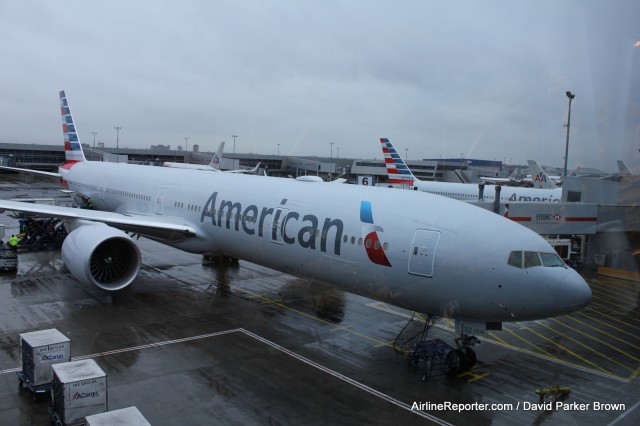
American Airlines Boeing 777-300ER at a cloudy JFK.
AMERICAN AIRLINES BUSINESS CLASS REVIEW BASICS:
Airline: American Airlines
Aircraft: Boeing 777-300ER (N719AN)
Departed: John F Kennedy International Airport (JFK)
Arrived: London Heathrow Airport (LHR)
Stops: Non-stop flight
Class: Business Class
Seat: 9A to and 8J back
Length: About 6 hours
Cheers: Amazing new Business Class product that goes head-to-head with international carriers.
Jeers: Still some grumpy employees who need to smile more.
Overall: American is not just talking the talk; they are walking the walk — they just need to walk a bit farther.
WARNING: This video might be disturbing to some readers.
NOTE: If video is not loading, try on LiveLeak.com directly or on YouTube.
Yesterday, a National Air Cargo Boeing 747-400F, (reg N949CA) crashed at Bagram Air Base in Afghanistan. At about 7am, local time, NCR 102 was heading to Dubai, appears to stall and fall out of the sky with seven crew members on-board.
’œThis was a purely cargo flight and no passengers were aboard,’ National Airlines said in a press statement according to the Examiner. ’œCargo consisted of vehicles and routine general cargo.’
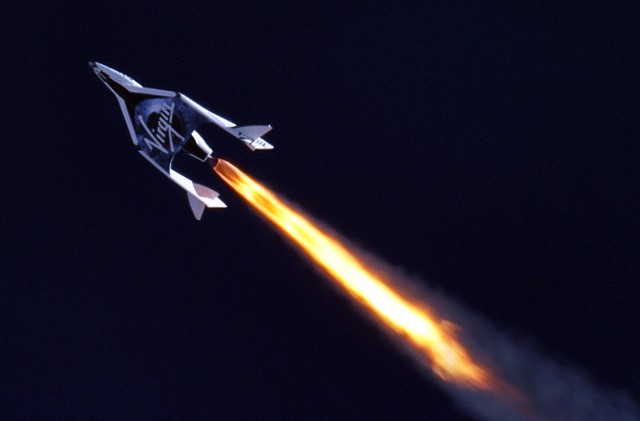
Spaceship 2 under Rocket Power as seen through the Telescope at the Clay Center Observatory – Photo: MarsScientific.com and Clay Center Observatory
At approximately 7:47am MDT on the 29th April, the future of space tourism became one step closer to reality. Virgin Galactic’s SpaceShip Two (SS2) fired its rocket motor and after a 16 second burn completed a successful test flight.
During the brief time that SpaceShip 2 (christened VSS Enterprise) was in the air, it achieved an altitude of 55,000ft and a speed of Mach 1.2. After a total flight time of just over 10 minutes it touched down safely in Mojave.
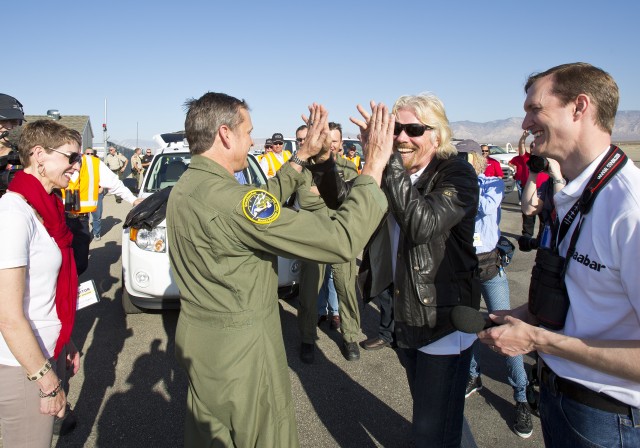
Sir Richard Branson & ‘Forger’ aka Mark Stucky congratulate each other after the completion of SS2’s first rocket-powered flight – Photo: Mark Greenberg
’œThe first powered flight of Virgin Spaceship Enterprise was without any doubt, our single most important flight test to date,’ said Virgin Galactic Founder Sir Richard Branson, who was on the ground in Mojave to witness the occasion. ’œFor the first time, we were able to prove the key components of the system, fully integrated and in flight.’
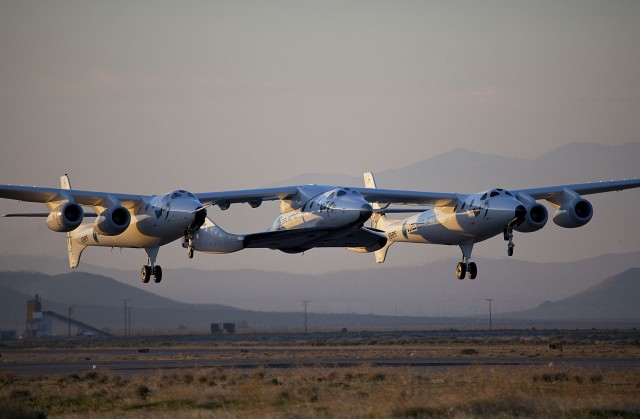
WhiteKnightTwo, christened VMS Eve after Richard Branson’s mother Eve, and SpaceShipTwo, known as VSS Enterprise, take to the skies during a test flight in Mojave, CA, USA. Photo: Mark Greenberg
SpaceShip 2 was carried to its launching altitude by White Knight 2 (WK2) (named VMS Eve after Sir Richard Branson’s mother). Once at 47,000ft Virgin Galactic’s Chief Pilot Dave Mackay, who was piloting WK2 at the time, released SS2 into free flight. Once verifying checks were completed, Mark Stucky, the test pilot, triggered the rocket motor ignition system and propelling the spacecraft on-wards & upwards.
’œThe rocket motor ignition went as planned, with the expected burn duration, good engine performance and solid vehicle handling qualities throughout,’ said Virgin Galactic President & CEO George Whitesides. ’œThe successful outcome of this test marks a pivotal point for our program. We will now embark on a handful of similar powered flight tests, and then make our first test flight to space.’
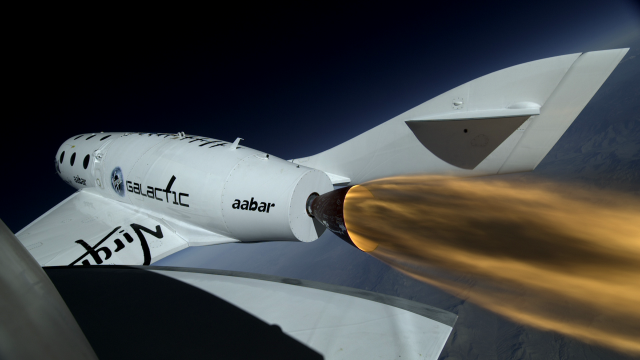
A shot of Space Ship 2 igniting its rocket motor as seen from the Boom Camera – Photo: Virgin Galactic
As the test program expands and begins it’s final phase Virgin Galactic and the manufacturer Scaled Composites, hope to see the first powered spaceflight by the end of this year. When that day is reached, it will mean the end of the test program and the beginning of entry to commercial service. I wonder how many miles it would take to cover the $200,000 ticket cost.
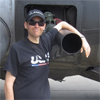 |
This story written by…Malcolm Muir, Lead Correspondent.
Mal is an Australian Avgeek now living and working in Seattle. With a passion for aircraft photography, traveling and the fun that combining the two can bring. Insights into the aviation world with a bit of a perspective thanks to working in the travel industry.
@BigMalX | BigMal’s World | Photos |
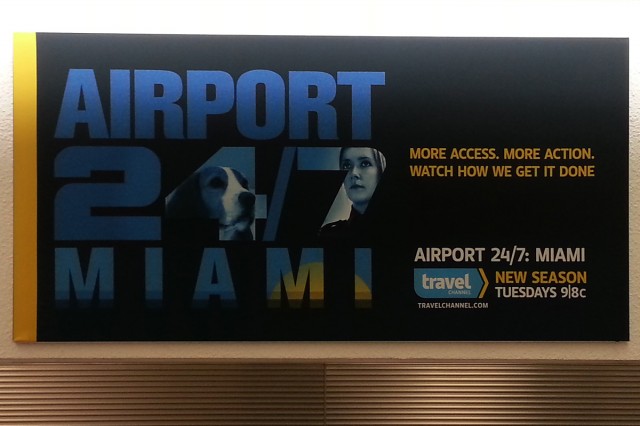
Airport 24/7 Ad in Baggage Claim at MIA. Photo by Brandon Farris / AirlineReporter.com.
Last Friday, AirlineReporter.com was in Miami to cover the season two premiere of Airport 24/7: Miami. This season will air on the Travel Channel and have 13 original episodes beginning Tuesday April 30th at 9/8C with a special 1 hour premiere.
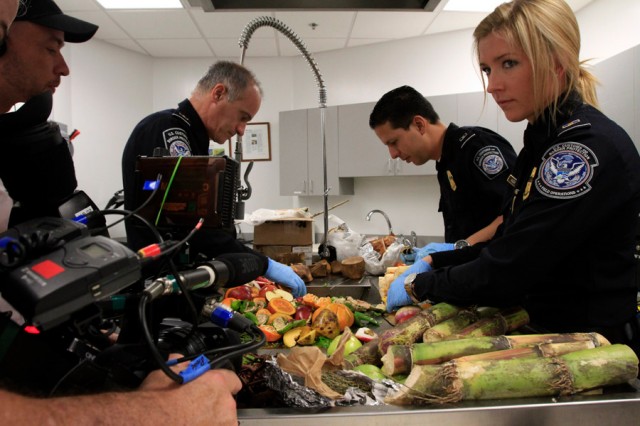
Customs check through produce for contraband. Image from the Travel Chanel / Airchive.com.
Much like the first season, the second starts off with a bang as two aircraft collide and the airport has to quickly come up with a solution. The incident causes issues as other aircraft are ready to depart but are unable to push back. The airport must figure out how to perform its investigation but also get the way quickly cleared to prevent more delays.
BONUS: Sneak peak of episode one of Airport 24/7: Miami season 2.
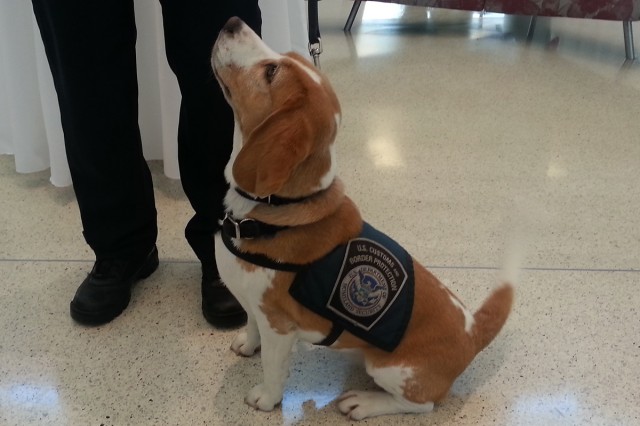
One of the Beagles on Airport 24/7: Miami. Photo by Brandon Farris.
The second episode follows medical crews along after a bus tries to drive under an overpass that is too short, causing the top of the bus to be cut open. Glass and debris is scattered everywhere leaving 35 people scared and some quite injured. Emergency crews try to save them and also keep traffic from backing up and people from missing their flights.
The other main story goes into how customs makes a huge drug bust and talks about how they go on to destroy it following the investigation. While I would love to tell you what happens on these two episodes, you will have to tune in to find out yourself!
BONUS: Sneak peak of episode two of Airport 24/7: Miami season 2.

The cast of Airport 24/7: Miami at the premiere event. Photo from 2C Media.
At the premier event we were lucky enough to get a visit from Customs and Border Patrol where we got to meet the airports Beagle Brigade that are trained to look for smuggled agriculture products and others animals. They easily stole almost everyone’s attention after the viewing and quickly became the stars!
Having the show produced by a true AvGeek really shows. Chris Sloan, who also writes for AirlineReporter.com and runs Airchive.com, does a great job working with the others on the show to make the show factual for those who love airlines, but also interesting to those who might not (yes, there are people out there like that).
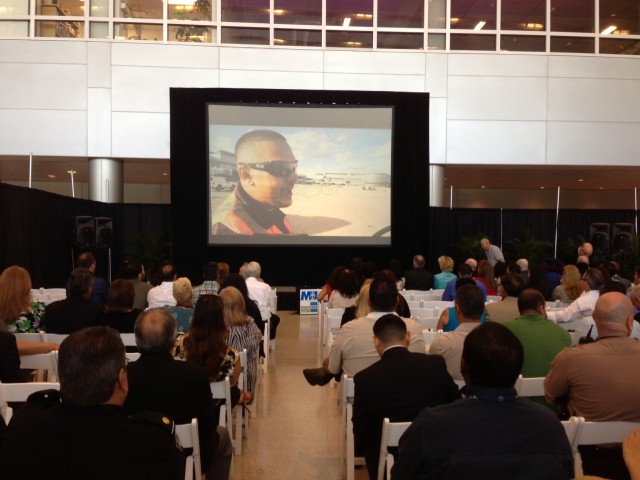
Watching the premiere of the show in Miami. Photo from Chris Sloan / Airchive.com / 2C Media
The show is fast pace and exhilarating. It is fascinating how it takes you behind the scenes and shows how the airport operates on a daily basis. This season is sure to please AvGeeks and anyone else that has an interest in to how an airport operates.
CHECK OUT ADDITIONAL BEHIND THE SCENE PHOTOS OF AIRPORT 24/7: MIAMI
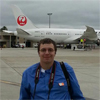 |
This story written by…Brandon Farris, Correspondent. Brandon is an avid aviation geek based in Seattle. He got started in Photography and Reporting back in 2010. He loves to travel where ever he has to to cover the story and try to get the best darn shot possible.@BrandonsBlog | RightStuffPhotography | Flickr |












